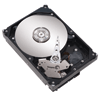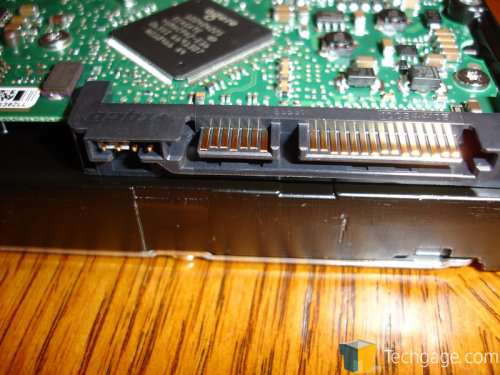- Qualcomm Launches Snapdragon 4 Gen 2 Mobile Platform
- AMD Launches Ryzen PRO 7000 Series Mobile & Desktop Platform
- Intel Launches Sleek Single-Slot Arc Pro A60 Workstation Graphics Card
- NVIDIA Announces Latest Ada Lovelace Additions: GeForce RTX 4060 Ti & RTX 4060
- Maxon Redshift With AMD Radeon GPU Rendering Support Now Available
Seagate Barracuda 750GB ES

Page 1 – Introduction
|
|
Network storage is vital to any network, large or small. The demand for large and reliable storage has always been around. It seems that no matter how large a hard drive is, it’s just a few short months from being not large enough. A good example of this is YouTube. With the ability to upload videos and share them with the world, the demand for large and reliable storage solutions are always in demand. Even for file server purposes in an enterprise/business environment, reliable storage is an absolute necessity for any business to maintain their day to day operations.
One company that always comes to mind is Seagate Technology. They are arguably the best maker of storage solutions on the market today. With the recent acquisition of Maxtor, there are really only a handful of major players in the storage game. With these needs of the industry in mind, Seagate has taken the challenge and brought their ES (Enterprise Storage) to market. Ranging in sizes from 250GB up to 750GB, the Seagate Barracuda ES is Seagate’s answer to the storage size question.
On our plate today, Seagate has been kind enough to send out not one Barracuda ES 750GB drive, but 4. That’s 3 terabytes of storage. There are many ways that we could test these hard drives out but for today, we are going to work with a single drive, testing it in a stand alone fashion. In a few weeks, we are going to revisit this hard drive and use it and it’s three other friends in an in-depth, comprehensive RAID article. That however is for another place and time.
The Barracuda ES 750GB offers a 16MB cache, much larger than the normal 8MB that most hard drives have. Seagate also uses perpendicular recording in this drive as well. The quick summary of perpendicular recording is that it allows far more data to be packed in closer together on the platter resulting in more data in the same amount of area compared to a standard hard drive not using perpendicular recording. The more data that can be fit onto each platter means that more data can be read with each revolution of the platter itself. Perpendicular recording can be thanked for this.
Seagate give the ES line of hard drives a staggering 1 million hours of MTBF (mean time between failure) which means that this drive will be around for a long time, reliably storing all of your precious information. It should also be mentioned that the hard drives BIOS will also spin down when not in use to even further prevent unneeded wear and tear on the hard drive.
For our tests, we are going to be using a few real world file transfers as well as a couple of program’s results. We will be using HD Tach, HD Tune, PC Mark 2005 and Sandra 2007 to get the information that we need for the review and will be conducting 4 separate transfers for real life results. The real life tests will include one solid 4GB file, one 4GB folder with many folders and many files, one 4GB folder with many files and few folders and one solid 8GB file as well. I will record the time it takes to physically move these folders and files from one area of the hard drive to the other.
To add to the versatility of the Barracuda ES, you have the option to switch between SATA I and SATA II by removing a small jumper on the back of the hard drive. That is if your motherboard should not have SATA II capabilities.
- Specs and Testing
- Interfaces SATA 3Gb/s 2Gb/s Fibre Channel
- Capacity (GB) 750, 500, 400, 320, 250
- Spindle Speed (RPM) 7200
- Cache, Multi-segmented (Mbytes) 8, 16
- Seek Time, Read/Write (average, msec) 8.5/9.5
- Reliability Rating at Full 24×7 Operation (AFR) 0.73%
- Transfer Rate, Sustained (Mbytes/sec) 72 or 78 (750GB only) 67
- Power Consumption (watts, idle) 9.3
- Rotational Vibration (rad/sec2) 12.5
- Limited Warranty (years) 5
The test machine that we will be using for this review is as follows:
- Specs and Testing
- Intel Core 2 Duo ‘Conroe’ E6600
- DFI Infinity 975 X/G
- Kingston RAM Hyper X 6400 2GB
- Enermax Galaxy 850W PSU
- Seagate Barracuda 320GB SATA HDD
- Windows XP SP2
- ICH7R Southbridge for SATA II
There are 4 main hard drive benchmarks that we run here at Techgage. In no particular order of importance, they are HD Tach, Sandra 2007, PC Mark’ 05 and a standard real world environment benchmark. As stated earlier, the real world test includes the transfer of large solid files and folders with many different fields and folders.
|
|
Support our efforts! With ad revenue at an all-time low for written websites, we're relying more than ever on reader support to help us continue putting so much effort into this type of content. You can support us by becoming a Patron, or by using our Amazon shopping affiliate links listed through our articles. Thanks for your support!








